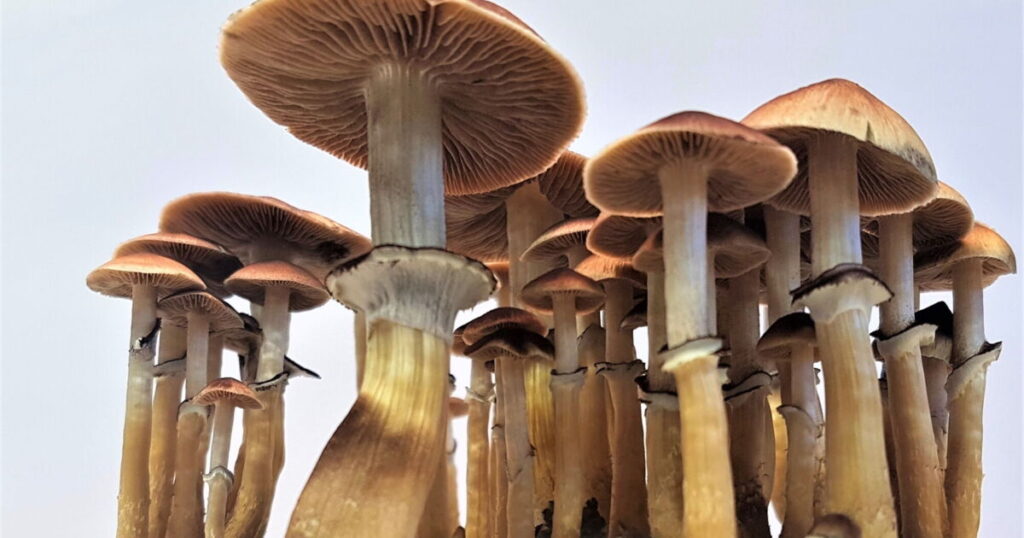Uncategorized
The Comprehensive Guide to Growing Psilocybe Cubensis: Unveiling the Mysteries of Shrooms and Psilocybin
In recent years, the fascination with Psilocybe cubensis, commonly known as magic mushrooms or shrooms, has surged among enthusiasts and researchers alike. As interest grows, so does the curiosity surrounding how to cultivate these mystical fungi. This guide aims to provide a thorough understanding of Psilocybe cubensis, from its basic definitions to the intricate steps of cultivation, alongside the role of psilocybin—the active compound responsible for its psychedelic effects. Whether you’re a novice or an experienced grower, this comprehensive blog post will equip you with the knowledge and techniques needed to successfully grow Psilocybe cubensis.

Understanding Shrooms: What Are They?
What Are Shrooms?
Shrooms, or magic mushrooms, refer to various species of fungi that contain the psychoactive compounds psilocybin and psilocin. Among these, Psilocybe cubensis is the most well-known and widely cultivated. Shrooms have been used for thousands of years in spiritual and religious rituals due to their mind-altering effects, which include vivid hallucinations, altered perceptions of time and space, and profound introspective experiences.
The Role of Psilocybin
Psilocybin is the primary psychoactive compound found in magic mushrooms. When ingested, psilocybin is converted into psilocin, which interacts with serotonin receptors in the brain, particularly the 5-HT2A receptor. This interaction leads to altered states of consciousness and sensory perceptions, making psilocybin a subject of interest in both recreational and therapeutic contexts.
The Fascination with Psilocybe Cubensis
Why Grow Psilocybe Cubensis?
Growing Psilocybe cubensis offers several benefits:
- Self-Sufficiency: Cultivating your own shrooms ensures a consistent supply and eliminates the risks associated with purchasing from unreliable sources.
- Cost-Effective: Growing shrooms can be more economical than buying them.
- Therapeutic Research: Home cultivation allows for personal exploration of psilocybin’s therapeutic potential under controlled conditions.
- Hobbyist Satisfaction: The process of growing shrooms can be a rewarding and educational hobby.
How to Grow Psilocybe Cubensis: A Step-by-Step Guide

1. Preparation and Planning
Selecting a Strain
Psilocybe cubensis has numerous strains, each with unique characteristics. Popular strains include:
- Golden Teacher: Known for its potency and introspective effects.
- B+: Favored for its large fruits and beginner-friendly growth.
- Ecuador: Renowned for its resilience and suitability for novice growers.
Legal Considerations
Before starting, it’s crucial to understand the legal status of psilocybin mushrooms in your region. In many places, the cultivation and possession of Psilocybe cubensis are illegal. Always comply with local laws and regulations.
2. Gathering Supplies
Basic Supplies Needed
- Spores or Spore Syringe: The starting point for cultivation. Spores can be obtained from reputable suppliers.
- Substrate: A nutrient-rich medium where the mycelium will grow. Common substrates include brown rice flour, vermiculite, and water.
- Jars: Typically, half-pint or pint-sized mason jars are used.
- Pressure Cooker: Essential for sterilizing the substrate.
- Incubation Chamber: A controlled environment for mycelium growth.
- Fruiting Chamber: Where the mushrooms will eventually grow.
3. Preparing the Substrate
Brown Rice Flour (BRF) Substrate Method
The BRF substrate method is one of the most popular and beginner-friendly techniques.
Ingredients:
- 2 cups brown rice flour
- 2 cups vermiculite
- 1 cup water
Instructions:
- Mix the Substrate: Combine the brown rice flour, vermiculite, and water in a large bowl until evenly mixed.
- Fill the Jars: Loosely fill each jar with the substrate mix, leaving about an inch of space at the top.
- Sterilize the Jars: Cover the jars with foil and place them in a pressure cooker. Sterilize at 15 PSI for 60-90 minutes to eliminate contaminants.
4. Inoculation and Incubation
Inoculating the Substrate
- Cool the Jars: Allow the sterilized jars to cool to room temperature.
- Inoculate with Spores: Using a spore syringe, inject a small amount of spore solution into the substrate through the jar’s injection ports. Typically, 4-6 injection sites per jar are sufficient.
- Seal and Store: Cover the injection sites with micropore tape to prevent contamination.
Incubation Process
- Incubation Chamber: Place the inoculated jars in an incubation chamber at a consistent temperature of 75-81°F (24-27°C).
- Monitoring Growth: Over the next 1-3 weeks, the spores will germinate, and mycelium will begin to colonize the substrate. White, thread-like growth indicates healthy mycelium.
5. Creating the Fruiting Conditions
Preparing the Fruiting Chamber
- Construct the Chamber: A simple fruiting chamber can be made using a plastic storage bin with holes drilled for ventilation.
- Humidity Control: Line the bottom with perlite and mist it with water to maintain high humidity levels.
Inducing Fruiting
- Transfer the Cakes: Once the substrate is fully colonized (completely white), remove the cakes from the jars and place them in the fruiting chamber.
- Initiate Fruiting Conditions: Increase humidity and introduce light (a 12-hour light/dark cycle) to trigger fruiting.
6. Harvesting and Drying
Harvesting
- Timing: Mushrooms are ready to harvest when the caps begin to separate from the stems.
- Harvest Technique: Gently twist and pull the mushrooms from the substrate.
Drying the Mushrooms
- Air Drying: Place the harvested mushrooms on a drying rack in a well-ventilated area for 24-48 hours.
- Desiccant Drying: For longer storage, use a desiccant to remove any remaining moisture.
Exploring the Benefits and Risks of Psilocybin
Therapeutic Potential
Recent studies have highlighted psilocybin’s potential in treating various mental health conditions, including:
- Depression: Psilocybin-assisted therapy has shown promise in reducing symptoms of treatment-resistant depression.
- Anxiety: Particularly effective in alleviating anxiety in patients with terminal illnesses.
- PTSD: Preliminary research suggests benefits in managing symptoms of PTSD.
Risks and Considerations
- Mental Health Risks: Psilocybin can exacerbate underlying mental health issues or trigger psychotic episodes in susceptible individuals.
- Legal Risks: Given the legal status of psilocybin, there are potential legal consequences for cultivation and use.
- Safe Usage: It is crucial to use psilocybin responsibly, preferably under the guidance of a healthcare professional or experienced guide.
Recommended Reading: How to Grow Psilocybe Cubensis Books
For those seeking in-depth knowledge, several books provide comprehensive guides on growing Psilocybe cubensis:
- “The Psilocybin Mushroom Bible” by Dr. K Mandrake: A thorough guide covering everything from spore to harvest.
- “Growing Gourmet and Medicinal Mushrooms” by Paul Stamets: While not exclusively about Psilocybe cubensis, this book offers valuable insights into mushroom cultivation techniques.
- “Psilocybin Mushrooms of the World” by Paul Stamets: A comprehensive reference for identifying and cultivating various psilocybin-containing mushrooms.

Conclusion
Cultivating Psilocybe cubensis is a rewarding journey that combines science, art, and a touch of mysticism. By following this guide, you’ll not only gain practical knowledge on how to grow these fascinating fungi but also deepen your understanding of the profound effects of psilocybin. Whether you’re motivated by personal interest, therapeutic exploration, or scientific curiosity, the world of Psilocybe cubensis offers endless opportunities for discovery and growth. Remember to always prioritize safety, legality, and responsible use in your cultivation endeavors.
